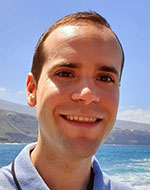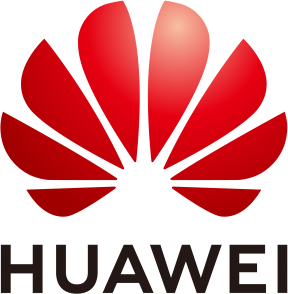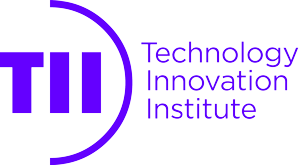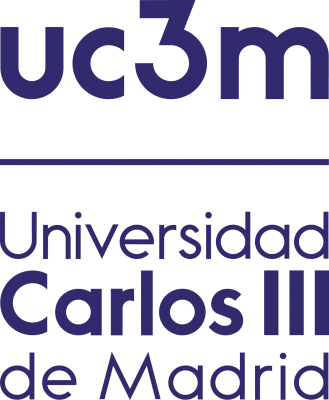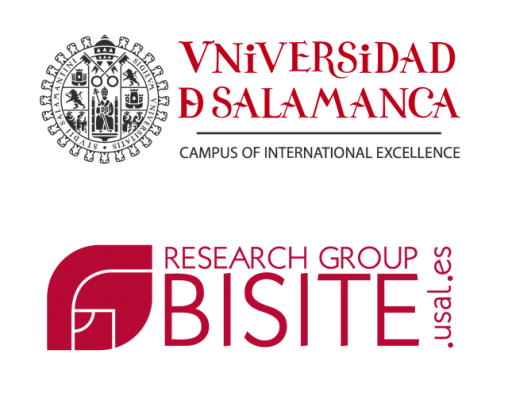The Spotlight talks are a new format for Globecom starting this year. Our goal is to address technology that has emerged from R&D and is starting to find use in commercial settings. The speakers are highly qualified to discuss their topic with both development and commercial experience with the technology. The speakers will describe their technology in some detail, why it is important, what breakthroughs were made in its development, and how it is now being deployed in the marketplace. The target audience for the spotlight talks includes, but is not limited to, engineers who have little familiarity with a technology but are interested in applying it to their own products, or those who are seeing a technology appear in their field and are keen to understand in some detail how it may be applied. Our intention is for the presentations to be interactive and engage the audience for questions and comments. Anyone who is interested in how research emerges into product will find these talks interesting and educational.
Some of the speakers will be presenting in-person in Madrid while others will be presenting live remotely. All of them will be live streamed through the conference virtual platform.
8 December
Spotlight talk 4: connected edge intelligence for beyond 5G/6G (8 Dec, 14:00 hybrid in-person + remote)
Spotlight talk 2: From theory to reality, massive MIMO in 5G and beyond (8 Dec, 14:45 remote)
9 December
Spotlight talk 9: Aerial and spaceborne communications: the journey from 5G to 6G (9 Dec, 11:00 hybrid in-person + remote)
Spotlight talk 7: DSP for 50 Gbps optical access networks (9 Dec, 11:45 hybrid in-person + remote)
Spotlight talk 8: Towards quantum distributed computing (9 Dec, 11:45 remote)
10 December
Spotlight talk 3: When light brings data: from pure research to a real illuminated world (10 Dec, 14:00 remote)
Spotlight talk 5: A transition of cell-free MMIMO in 6G networks from theory to practice (10 Dec, 14:00 in-person)
Spotlight talk 1: Security considerations for evolving open ran architectures (10 Dec, 14:45 remote)
Spotlight talk 6: Shared spectrum -- A success story (10 Dec, 14:45 remote)
List of talks:
Spotlight talk 1: Security considerations for evolving open ran architectures (10 Dec, 14:45 remote)
Spotlight talk 2: From theory to reality, massive MIMO in 5G and beyond (8 Dec, 14:45 remote)
Spotlight talk 3: When light brings data: from pure research to a real illuminated world (10 Dec, 14:00 remote)
Spotlight talk 4: connected edge intelligence for beyond 5G/6G (8 Dec, 14:00 hybrid in-person + remote)
Spotlight talk 5: A transition of cell-free MMIMO in 6G networks from theory to practice (10 Dec, 14:00 in-person)
Spotlight talk 6: Shared spectrum -- A success story (10 Dec, 14:45 remote)
Spotlight talk 7: DSP for 50 Gbps optical access networks (9 Dec, 11:45 hybrid in-person + remote)
Spotlight talk 8: Towards quantum distributed computing (9 Dec, 11:45 remote)
Spotlight talk 9: Aerial and spaceborne communications: the journey from 5G to 6G (9 Dec, 11:00 hybrid in-person + remote)
Spotlight Talk 1: Security Considerations for Evolving Open RAN Architectures
Abstract
5G will provide significant societal value as it is used for critical infrastructure, mission critical applications, smart manufacturing, connected car, and other use cases. As a result of this new usage, our risk tolerance must be decreased because of the increased impact of cyberattacks on the 5G network. This requires a risk-based approach to securing Radio Access Networks (RAN) as it evolves to Open RAN that is virtualized, disaggregated, cloud-native, automated, and intelligent.
Along with new secure use cases, there is an emerging requirement for Open RAN which can be implemented using the approaches of virtual RAN, Cloud RAN, and O-RAN. These new technologies in the wireless cellular space bring inherent security benefits while also introducing new security risks. This presentation will address the Open RAN approaches and the security risks for each. Open RAN security topics that will be discussed include 3GPP 5G security, cloud security, security-by-design, and secure use of open source software. ORAN’s expanded threat surface, with additional interfaces and functions, introduces additional security risks that will also be discussed. The presentation will also introduce concepts to achieve a zero-trust architecture for Open RAN that can be implemented in Cloud RAN and O-RAN. The multi-party relationship between the operator, cloud provider, and system integrator requires security roles and responsibilities are clearly defined in this presentation.
Scott Poretsky, Director of Security, Network Product Solutions, Ericsson North America
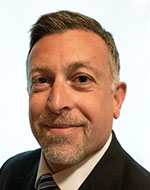
Jason S. Boswell, CISSP, Head of Security, MANA Network Product Solutions

Spotlight Talk 2: From Theory to Reality, Massive MIMO in 5G and Beyond
Abstract
Massive MIMO is now a well known technology in academia. But there has been much research and development into its practical application in 5G cellular systems that is not as well understood generally. In this talk we illuminate the path that massive MIMO has taken to deployment in commercial systems as well as some of the challenges that had to be addressed along the way.
First we will review the massive MIMO concept and design from an academic / research perspective. highlighting the major theoretical difficulties and breakthroughs that made the technology feasible and attractive to the industry. We then describe the major problems encountered during industry development and deployment and what made it a success in 5G system. Finally we explain the challenges and future directions of massive MIMO when standards and industry start working on 5.5G and 6G and how academia and industry should collaborate in this and other areas of 6G.
We describe the use of Massive MIMO in mid-band where it is one of the key features and success stories for 5G systems. Massive MIMO is supported in 5G standards by features such as reference signal/pilot signal designs, channel state information feedback, and transmission scheme, etc. All major network vendors and operators are deploying 5G systems with massive MIMO technologies using 32 or 64 antenna ports at least in mid-band (3-4 GHz frequency range).
With the success in 5G, gNB base stations with massive antennas is becoming mainstream. Until now, most of the work were done by the so-called MIMO experts/engineers for eMBB traffic (e.g. Internet access from mobile phones). Going forward, networks with massive number of antennas will be used for all kinds of services. To fully utilize the potential of such a network, significant amount of work is needed and we will discuss this issue and its challenges. One example is how massive MIMO should work for URLLC types of traffic.
Even though massive MIMO has improved the spectral efficiency of the networks significantly, the net performance gain is still relatively moderate comparing to the cost increase from deploying a massive antenna gNB and comparing to the theoretical potentially from the large number of antennas, especially with mobility. We will show some examples of this and discuss further opportunities and challenges that demand new efforts, methods, and tools to achieve the high potential of massive MIMO. Through successful collaboration between universities and companies, we can learn lessons on how academia and industry can collaborate further in massive MIMO.
evolution/revolution as well as for new ideas/areas for 6G research and development.
Weimin Xiao, Technical Senior Director, Wireless Standards and Research, Futurewei Technologies Inc
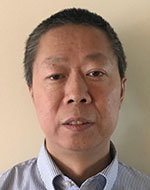
Robert W. Heath Jr., Distinguished Professor, North Carolina State University
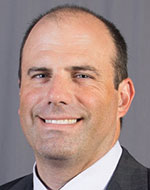
Spotlight Talk 3: When Light brings Data: From Pure Research to a Real Illuminated World
Abstract
In the recent years, the need for high QoS Internet services along with increasing data traffic has increased and led to bandwidth scarcity in the radio-frequency (RF) spectrum. One of the solutions to this problem is the use of Visible Light Communications (VLC). Visible Light Communications is a declination of the broader wireless optical paradigm that embraces also infra-red and ultra-violet. Recently we have seen deployment of Li-Fi (Light-fidelity) which has emerged as an innovative technology for indoor wireless by starting to augment typical RF-based systems. But eventually we expect it will replace conventional Wi-Fi access in many scenarios.
Li-Fi, and VLC more generally is capable of providing multiple services like illumination, data transmission and localization at the same time making it a suitable technology for the smart environments driving the evolution towards the 6G Era. VLC has been enabled by the development of suitable light emitting diodes (LEDs) as incoherent solid state lighting sources employable for both illumination and data transmission. At the receiver side, the optical signal is collected by a photodiode (PD) and converted into a current that is further processed in order to detect information. The small size of optoelectronic hardware allows the implementation of dense multi-LED transmitters, in the form of an array or matrix at the access point, while within the portable user equipment there is a need for small device, leading to miniaturization and a reduced number of receiving elements. The engineering and communications challenges underlying these technologies will be described in some detail.
Another paradigm, known as camera communication, utilizes smartphone cameras as receivers in order to provide access to general purpose devices and this will be described and discussed.
Visible Light Communications is a new technology with some commonality to traditional radio frequency solutions as well as techniques that until now were specifically developed for optical wireless systems. We will outline the field of application of VLC which is very broad with uses in situations where RF may be less suitable or unsuitable such as airplanes systems, hospital environments etc. We will also describe the inherent security advantages of VLC which is able to grant an optical secrecy level in which eavesdroppers must be within a few squared meters of the user to mount a possible attack.
Mauro Biagi, University of Rome "La Sapienza", Italy
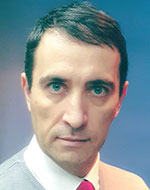
Jaafar Elmirghani, University of Leeds, UK
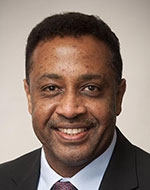
Jean-Paul Linnartz, Technische Universiteit Eindhoven, NL and Signify, NL
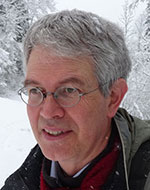
Spotlight Talk 4: Connected Edge Intelligence for Beyond 5G/6G
Abstract
Sitting at the intersection of wireless communication and ML, the talk will focus on two important aspects of wireless edge AI.
First, we will discuss and demonstrate the application of ML in wireless communication for understanding, orchestrating, securing and maximizing the use of spectrum resources through learning. ML techniques can provide significant leaps in performance and efficiency of key L1 functions surrounding channel sensing, channel modeling, modulation and receiver design, and spatial re-use, as well as improving access and coordination schemes. We will explore how some of these ideas are advancing the 5G RAN today and how they can evolve to enable 6G.
Second, we describe the role of Distributed Edge AI in the wireless environment. Owing to the distributed nature of data arising from sensors, base stations, and so forth, the goal in edge AI is to train privacy-preserving machine learning models under resource constraints. We provide an overview of recent techniques such as federated learning, distillation and split learning. We will also explore how to harness over-the-air computing and analog communication to provide scalable and privacy-preserving over-the-air model training. The talk will conclude by shedding light onto the next frontier of edge AI sitting at the confluence of semantic communication and ML.
Mehdi Bennis, Associate Professor, Univ. of Oulu
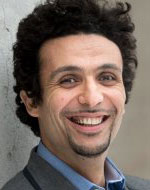
Tim O'Shea, CTO, DeepSig, Arlington, VA

Spotlight Talk 5: A Transition of Cell-free mMIMO in 6G Networks from Theory to Practice
Abstract
The use of MIMO and Massive MIMO is considered one the most disruptive and effective technologies introduced in recent years. For beyond 5G networks, the use of cell-free MIMO is being considered, which essentially means distributing the access points (AP) and doing the processing either locally or centrally. While many studies have considered spectral efficiency gains of various central or local processing methods, few publications consider the impact of the 5G architecture, and the NG-RAN, on the cell-free networking opportunities and challenges. The O-RAN alliance, initiated by some large operators and players in the telecom domain, aims to transform the radio access networks towards truly virtualized, distributed, and most importantly open systems. In an ideal world, multiple distributed O-RAN entities cooperate seamlessly to bring the best possible connectivity to each UE, cooperating through the O-RAN APIs. The key challenge that remains is how to merge cell-free networking, and distributed processing, with those existing network architectures.
To exploit those distributed O-RAN entities optimally, and meet diverse requirements of future communication systems, beyond 5G intelligent networks will provide enhanced flexibility through the dynamic scheduling of the available resources. Given the densification of networks, and the introduction of cell-free architectures, the availability of radio access resources is unseen, and is only limited by the potential of the resource allocation methods. A major challenge is how to achieve this within standard and open architectures, such as for instance the O-RAN ALLIANCE.
We will give a brief overview of the main academic trends in cell-free communication and radio resource management. We then describe how they will be mapped to NG-RAN and O-RAN terminology and architectures, giving a clear insight in the remaining challenges and innovation needs.
Sofie Pollin, Wireless Systems Expert, KU Leuven
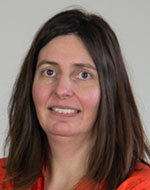
Md Arifur Rahman, Research and Development Expert, IS-Wireless
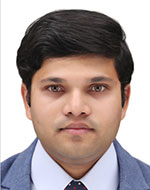
Spotlight Talk 6: Shared spectrum -- A Success Story
Abstract
How to efficiently utilize the physically limited resource of spectrum has become a critical problem to solve in the 21st Century as wireless communications continues to grow exponentially, with wireless technology moving from 4G to 5G and the advent of the Internet of Things. In the US, the Federal Government is the largest single user of midband spectrum, so no serious solutions could be developed without full engagement with the FCC, DoD and NTIA. In-depth academic and industry discussions began with the Obama administration’s President’s Council of Advisors on Science and Technology, culminating in a report issued on July 20, 2012: Realizing the Full Potential of Government-Held Spectrum to Spur Economic Growth. The report concluded that the traditional practice of clearing and reallocating portions of the spectrum used by Federal agencies was not a sustainable model for spectrum policy, recommending that the best way to increase capacity was to leverage new technologies that enable large blocks of spectrum to be shared. In 2015 this led to the FCC adopting new rules for sharing spectrum in the 3.5 GHz band, naming the band Citizens Broadband Radio Service.
Professor Reed was on the ground floor of turning the academic concept into an industry reality with the founding of Federated Wireless, laying the groundwork for developing one of the first Spectrum Access Systems that dynamically shares spectrum in real-time. Kurt Schaubach picked up the reigns at Federated Wireless, shepherding the product through the FCC/NTIA certification process and commercially launching the service in September 2019. Professor Reed and Mr. Schaubach will talk about this history and the lessons learned from government, academia and industry working together to solve an issue that goes beyond technology alone. Mr. Schaubach will also discuss the commercial success of CBRS and review how it has led to the global exploration of spectrum sharing as a viable and necessary option for efficient spectrum utilization. Both will discuss how the commercial opportunities for spectrum sharing may evolve over time.
Jeffrey H. Reed, Willis G. Worcester Professor, Virginia Tech
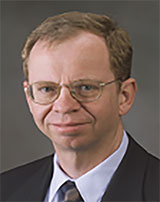
Kurt Schaubach, CTO, Federated Wireless

Spotlight Talk 7: DSP for 50Gbps Optical Access Networks
Abstract
Until now, optical access networks have used basic intensity modulation direct detection transmission methods, using elementary signal recovery techniques (clock and data recovery). Now that baud rates are increasing, this simple approach is no longer viable if the system is to maintain the sizable loss budget (30 dB) that is required. At the same time, the cost of high-speed digital signal processing (DSP) has declined enough that it can be applied to an optical access system. The ITU-T has been developing the “High Speed Passive Optical Network” (HS-PON) since 2018, and that work has now culminated with the consent of the first complete set of recommendations that describe a 50 Gb/s (over a single wavelength) PON. In addition, several prototype systems have been developed and demonstrated in laboratory trials with several operators. It is expected that significant deployment of 50 Gb/s PON will begin in 2024.1
At present, there are many groups dedicated to DSP research, but most of these are targeted to wireless technologies or to coherent optical transmission. This means that the optical access field is presently underserved by the DSP community, and is fertile ground for research.
Our presentation will provide the necessary technical background to understand the fiber access network, and then present the various ways in which DSP can be applied to solve the major issues that come from increasing the speed of those networks. One issue we will address is the use of bandwidth limited components to enable lower cost systems, where DSP can enable a doubling of baud rate with only 2dB worse optical sensitivity.
We will also describe the problem of resolution in burst mode transmission, the classical challenge of passive optical networks. We show that DSP can do far better than the traditional analog techniques, both in terms of sophistication of signal recovery algorithms and in adaptability of reception parameters.
Most engineers with optical access experience lack an in-depth knowledge of DSP technologies. Conversely, most DSP engineers lack the knowledge of the idiosyncrasies that arise from burst mode transmission at very high baud rate. The goal of this presentation is to bridge the gap between the PON and DSP engineers, planting a seen from which some new applications of existing techniques can be found.
Frank J. Effenberger, Fellow, Futurewei Technologies, inc.
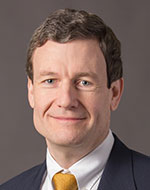
Roberto Gaudino, Dipartimento di Elettronica e Telecomunicazioni Politecnico di Torino - Italy

Spotlight Talk 8: Towards Quantum Distributed Computing
Abstract
In the last few years a variety of players have entered the quantum race, ranging from tech giants - such as IBM and Google – to several small start-up companies, as well as states and governments, with massive public funds to be distributed over the next years. Standardization efforts are already ongoing, such as the one within the Internet Engineering Task Force (IETF). The IEEE has become involved in this effort. Within the context of a real quantum revolution, the vision is to build a quantum network infrastructure, also known as the Quantum Internet, to interconnect remote quantum devices so that quantum communications among them are enabled. We will give an overview about the main challenges and open problems arising in the design of a distributed quantum computing architecture.
Quantum computing is on the verge of sparking a paradigm shift. Software reliant on this nascent technology, one rooted in the physical laws of nature, could soon revolutionize computing forever. We will focus on the current quantum computer technology from the hardware and software point of view, providing a detailed roadmap for next years. In this context, specific integration of classical and quantum computing that represents a huge step in accelerating the execution of quantum circuits, or sequences of quantum operations, on real Quantum systems will be described.
Angela Sara Cacciapuoti, Professor, University of Naples Federico II
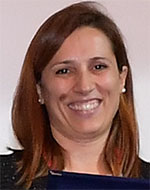
Michele Grossi, Quantum Computing Scientist - CERN openlab, CERN, Geneva, Switzerland
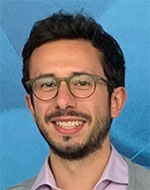
Spotlight Talk 9: Aerial and Spaceborne Communications: The Journey from 5G to 6G
Abstract
Barely seen in action movies until a decade ago, the progressive blending of UAVs into our daily lives will greatly impact labor and leisure activities alike. Most stakeholders regard reliable connectivity as a must-have for the UAV ecosystem to thrive, and the wireless research community has been rolling up its sleeves to drive a native and long-lasting support for UAVs in 5G and beyond. Moving up, the recent introduction of more affordable insertions into the low orbit is luring new players to the space race, making a marriage between the satellite and cellular industries more likely than ever. In this talk, we will navigate from 5G to 6G use cases, requirements, and enablers involving aerial and spaceborne communications, also acting as a catalyst for much-needed new research.
Giovanni Geraci, Universitat Pompeu Fabra, Barcelona, Spain
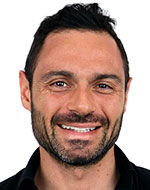
Adrian Garcia-Rodriguez, Huawei Technologies, France
